The Narrating Futures (NAFU) project was funded through a European Research Council Advanced Research Grant. I was honored and intrigued to find the interest of two of the largest insurance companies in the world, Allianz and Munich Re, and I want to deeply thank Dr.
1 The Theory and Poetics of Future Narratives
A Narrative
Future Narratives: A New Kind of Narrative
The knot is what future narratives have—and other kinds of narratives don't. As a class of investigation objects, Future Stories did not exist before they were identified as such.
What Narratives Do for You
Which brings me to the point: the significance of the historical fact is not in the event itself, it is a matter of its embedding in a specific narrative that connects the event to what happened before and after. It is therefore a very strong contender for the palm of MVP in the game of all historical sciences (which of course includes the history of science).
Approaching the Future I: Great Shock – Utopian Tales No Future Narratives!
They fail to achieve the ultimate goal to the same extent that they portray the future as a premature conclusion. If the telling of the future does not preserve the key aspects of the future tense, then, strictly speaking, the future is not shown as future.
Approaching the Future II: The Unbearable Gravity of the Present
This isn't 100 percent dialogue because of the odd "Licia says" or "Sam says" thrown in - these inquit forms are, strictly speaking, of course outside the dialogue. To return to the art form of the novel: the same applies to all other novels told in the present, such as Muriel Sparks's The Driver's Seat, J.M.
Capturing the Openness of the Moment: Some Basics About Nodes as Building Blocks of Future Narratives
More often, some information is given about the possible consequences of your choices or, more interestingly, about the pros and cons of the alternative you are given. We focus on FNs as the conditions for the possibility of such passages.
Run Lola Run – Only a Pre -Cursor?
Note that this is not about 'going back' into the story world; if it is not measured against the frame of reference of the page numbers, there is no 'going back' at all – all your movements are one-way. Which makes us think, when we watch a Run Lola Run type movie, that we're watching different sequels anyway.
The Road Not Taken
If we can think of life as a series of innumerable nodes, then one of the main appeals of some FNs (though not all) is that you can do exactly what you can't in real life: you can go back. Sometimes in the course of the same game, sometimes just by playing a new run in the game.
Doing the Shuffle: Lola Runs Again, Books in Boxes, and Slatted Pages
If the medium is the message, then the message in the digital version of composition no. The limitations of the author-as-composer are the precondition for the freedom of the reader-as-composer.
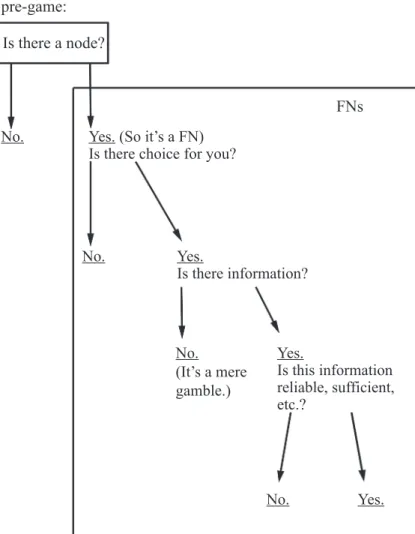
Decision (Choice) Theory and Game Theory, in Relation to FNs
But while Game Theory can help you find the best strategy for playing games whose nature is known, it is not necessary to identify the nature of the game - that is done before Game Theory begins its task. Game theory is not about the structure of the challenge, but about responses, which are definitely not the same.
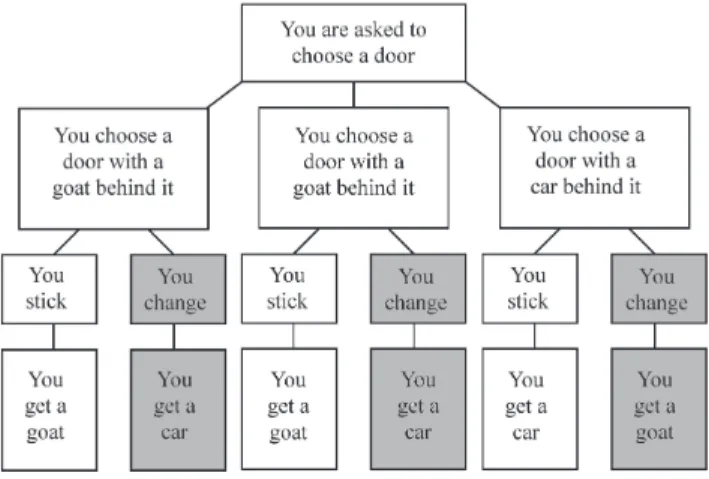
Into the Heart of the Matter: A Node’s Interior Life – Character, Space, Time
Which is just a restatement of the most basic questions, Does it contribute to the potential of the nodal situation. And all of the aforementioned aspects—if they exhibit any potential for variance—can contribute, to any degree, to the overall node power of a given node.
Nodal Power
Summarizing all of the above, it's safe to say, I think, that there is a straightforward answer to all of these questions: A node is a situation that allows for more than one continuation. And from then on it's a new move, a new calculation of the nodal power in that situation.
Varieties of Nodes
It defines this situation as a node, and that's why you're running the simulation in the first place. But for the sake of terminological clarity, a node that has scripting implications should not be called a "scripting node". since every node is scripted) since a node that has unscripted continuations should not be called an "open node" (because every node is open or it would not be a node).
Interactivity
By contrast, in the ontological mode, the user's decisions send the history of the virtual world on different forked paths. In the texts of this group, the user is outside both time and space of the virtual world.
Simulation
The possibilities of action evolve during the course of the program, and since affordances are determined by the global state of the system, as well as by the nature of the objects, the user's choices will always produce a coherent narrative development. It is the modeling of a process because at least one element of the real thing is replaced by something else (eg the human body by a crash test dummy). 8 This definition (accessible) has since been significantly improved to "imitating the operation of a real-world process or system over time" (accessed 18/4/2012).
As Node Leads on to Node: Nodal Structures and Their Representations
It aims to map an objective feature of the structure that allows for different runs (in which we are indeed not interested). The nodal power of a situation remains constant because it is an objective measure of how open it is. This is not mapping the temporality of an encounter with our representation of a nodal structure; it is the mapping of a temporality that this nodal structure itself exhibits as situations change.
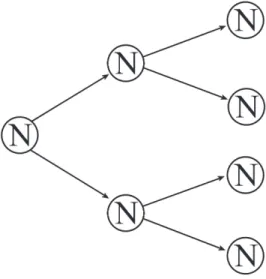
Why ‘Narrative’ Anyway?
We said: nothing happens inside a node, nothing except a transformation equal to the disappearance of the node. In hindsight, […] we can clearly explain why the past of the dye molecule evolved as it did. Narrative meaning, moreover, is a product of top-down planning by the storyteller or designer [emphasis added], while interactivity requires bottom-up user input.”
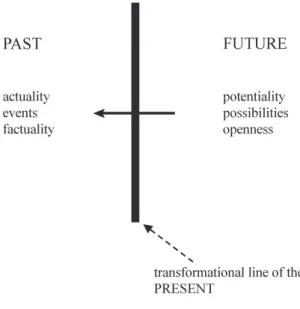
Stranger than Fiction: The Failure of Prediction, the Virtue of Scenarios, and Why FNs Are the Key to Our Future
But if you miss that, you miss what is essential about the future: namely that it is not always 'more of the same'. The future of the Earth System cannot be predicted – due to irreducible cognitive and volitional uncertainties. The tremendous technological advances of the Great Acceleration exacerbated momentum and inertia in the human-environment system.
The Human Brain as an ‘Anticipation Machine’
We are dealing with one of the defining variables in the game - the one that will ultimately have to answer the question. This frontal lobe—the last part of the human brain to develop, the slowest to mature, and the first to fail in old age—is a time machine that allows each of us to leave the present and experience the future before it happens. And behind the evolution of mankind, it seems to be the highest human capacity: to see oneself as the only animal capable of thinking about the future - and at the same time, it is wrong, most of the time.
The Way Ahead
But by duplicating processes that already exist – life as a duplication of the unexpected and imagination as a complement (not: reproduction) of what is – FNs foreground the potential of the human mind, which until now has been overshadowed by our preoccupation with the past and our constant attempts to would make sense of their existence here. From mere reality we turn to the potentiality of the present moment, to all that it contains in the way of possible continuations. There seems to be an incredible amount of nodal power at this present moment in humanity's evolution.
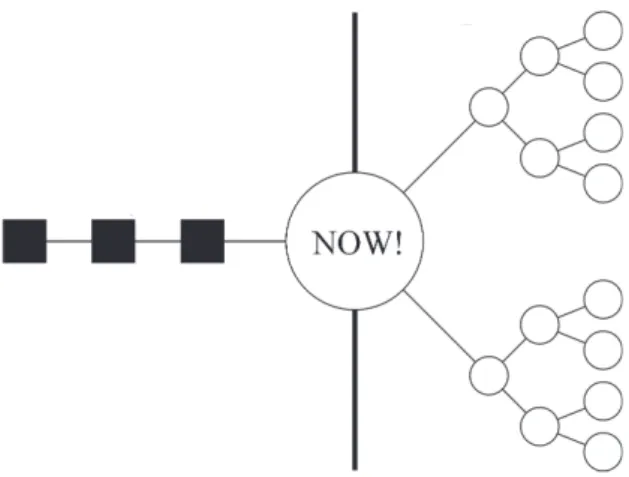
2 Formal Models for Future Narratives
Introduction
Representations of F Ns
- Nodal Graphs
- Aspects
- Consequences
- Reaching the same Situation in two different Ways
It is worth noting that the dimensions of the nodal graph have no importance whatsoever. More precisely, we will need the following two items: first, aspect space A, which is the set of formal representatives of the different realizations. What is the color of the stripes on the dress?', 'What is the width of these stripes?' etc.).
Quantification of Openness
- The Spectrum of Consequences
- The Spectrum of the Agent
- The Degree of Openness of a Situation: Nodal Power
What is the size of the range covered by the alternative continuations (in vague terms, 'the space between the extremes of the spectrum'). Our next goal is to quantify the coverage of the space covered by the consequences. Based on the above, we have that the renormalized spectral parameter is a number between 0 and 1.
Advanced Models for Similarities
- Similarity
- Formal Definition for Models of Type II Aspect assignments
- Models of Type II without underlying Subtractive Aspects
- Path Dependency of External Aspects
- Computing Nodal Power in the Presence of External Aspects The spectral parameter
By determining for each basis of situations what the realization of the aspect is in that situation. First, it is necessary to determine the realization of aspects in different situations. Then we combine the values of various external aspects (that is, their possible combinations) into the so-called state space.
Reversibility
- Undoing Choices
- Degree of Reversibility
This space is a subspace of the space of consequences, that is, it can be modeled as am-dimensional spaceRmwithm < k. Therefore, the element (ı!C,ı!S) has a magnitude that is the numerical measure of the total difference of external aspects alongı. On the other hand, if there is a curve for which the length of the total difference of the external aspects is less than, then within the given accuracy the choice of ei is completely reversible.
Topological Classification of Future Narratives
- The Topology of the Nodal Graph
- Geometrical Classification: Homology Groups Homology cycles
- Classification including Aspects: Cohomology Groups
- Conclusion
This means that in the formal sum representation of cycles, terms of the form +ei−eican are omitted. In particular, for any given loop, we can construct a cycleC from the elementary cycles that are equivalent to the loop in the above sense. Summary: the oriented integral of a differential form along a cycle is the deviation of the form along that cycle.
Appendix: Basic Mathematical Concepts
- Sets and Functions
- Basic Graph Theory Graphs
- Integration
The sum of the values of G,6i=1G(i) equals the area under the bar chart. The integral of the function over the area is therefore the volume between the surface and the coordinate system. The integral of a constant function 1 over a region is the area of that region (in our case, it is 1 . 1 = 1).
The Historicity of ‘Future’
Humanity's ideas about the future are historical, and the term 'future' has meaning only if it is historicized. The dialectical process, however, is not a fair and equal mixture of the linear and the cyclical, any more than the spiral is. Nowotny even speaks of "removing the category of the future" (53), which, as a critique of instrumental enlightenment (in the sense of Max Horkheimer and Theodor W. Adorno).
The Probability Calculus
4 For simplicity, all page references preceded by "Hacking" are to the Probability Display; no quotes from Hacking's The Taming of Chance. One might think that because there are three possible outcomes – no head, one head, two heads – the odds of each must be 1 in 3. But the way to this insight was paved by Gerolamo Cardano, who, somewhat unfairly, has been cut. excluded from Hacking's The Emergence of Probability (cf. 55, 56).
Insurances
But even she does not deny that the "new attitudes to control the future" began to be seen in the late 17th century and that there was a "feverish London insurance market [in] the mid-eighteenth century. " (Daston in Krüger, Daston, Heidelberger 244) The "domestication of risk" (Daston in Krüger, Daston, Heidelberger 249ff.) did not begin with the founding of the Equitable Society in 1762, and the basic principle of all modern insurance, i.e. . Admittedly, although insurance against fire participates in the general trend towards the quantitative recording of the world,⁸ until the 19th century the calculus of probability plays a minor role here compared to life insurance (cf. 43, 305). Add to this the well-established financial and fiscal revolutions of the late 17th century (cf.
Projects and the Stock Market: Great Expectations
Some of his projects, such as the reform of England's road network, suggest large-scale privatization, albeit within a strictly defined legal framework. In other words, Defoe's "projects" are projections in the original sense of the word - planned or proposed undertakings that are a "forward throw" of ingenious designs into the space-time of the future. They have a utopian character, but are temporary and not spatial utopia.